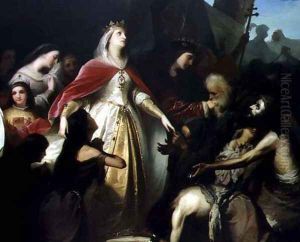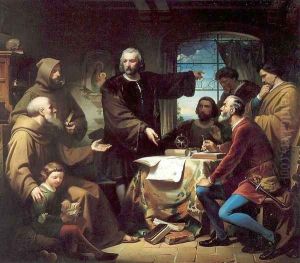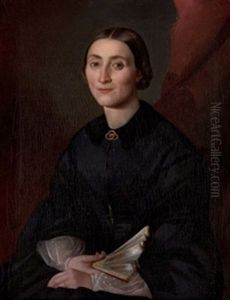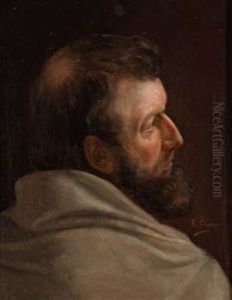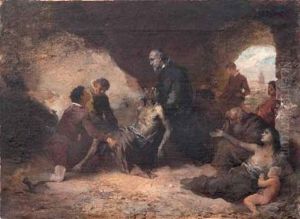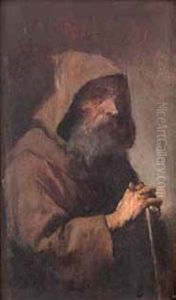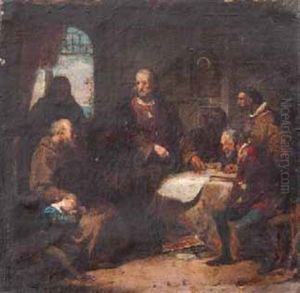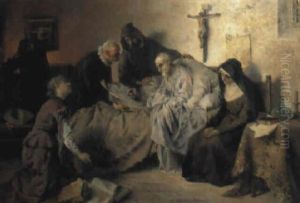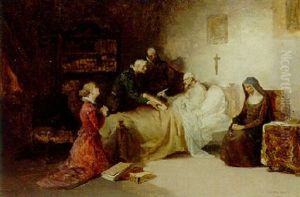Eduardo Javier Ramon Cano de la Pena Paintings
Eduardo Javier Ramon Cano de la Peña was a distinguished 19th-century Spanish painter, known for his historical and genre scenes. Born on April 28, 1823, in Seville, Spain, Cano de la Peña was a prominent figure in the Spanish art scene and is often associated with the Romantic movement, which was prevalent during his time.
Cano de la Peña received his initial artistic education at the Real Academia de Bellas Artes de Santa Isabel de Hungría in Seville. He later continued his studies at the prestigious Real Academia de Bellas Artes de San Fernando in Madrid. His talent was evident early on, and he received a scholarship to study in Rome, where he was exposed to the works of the Italian masters and the neoclassical style, which would influence his later work.
During his time in Rome, Cano de la Peña became part of an artistic circle that included many other Spanish painters who would later become key figures in the Spanish art world. After his studies in Rome, he traveled to Paris, where he was exposed to the works of contemporary French artists, further enriching his artistic perspective.
Upon his return to Spain, Cano de la Peña established himself as a painter of historical scenes, often depicting dramatic and emotional moments from Spanish history. His work was characterized by a meticulous attention to detail, a mastery of color, and a dynamic use of light and shadow. He was also known for his portraits and religious paintings, which reflected his deep understanding of human emotion and spirituality.
Cano de la Peña's contributions to Spanish art were recognized with various awards and honors throughout his career. He was a member of the Real Academia de Bellas Artes de San Fernando and served as a professor at the Special School of Painting, Sculpture, and Engraving in Madrid. His works were exhibited in numerous exhibitions and gained him acclaim not only in Spain but also internationally.
He passed away on January 3, 1897, in Madrid. Today, Cano de la Peña's works can be found in various museums and collections, and he is remembered as one of the significant contributors to the Spanish Romantic movement. His legacy is preserved in the history of Spanish art, and his works continue to be studied and admired for their emotional depth and technical brilliance.
